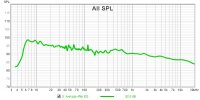DanielT
Major Contributor
Well, say a couple of line speakers that go from floor to ceiling. Do they fit in any listening room? I do not know. Nice solution with line speakers in any case, I think.There's a debate whether that's true or not
Some say a big speaker in a small room is better than a small speaker in a small room
And that there's no such thing as a "too big" speaker for a room.
Honestly I don't know what is correct
Took an example, even if they do not go all the way floor to ceiling .
This is a better example, from floor to ceiling. Also with tweets in line. Can probably make sense when designing line speakers.
Last edited:



 . The RS2s do dig a bit deeper it seems, but functionally (given the lack of content down there) it's basically the same. My Rythmik and JTR subs sound basically identical(after EQ).
. The RS2s do dig a bit deeper it seems, but functionally (given the lack of content down there) it's basically the same. My Rythmik and JTR subs sound basically identical(after EQ).